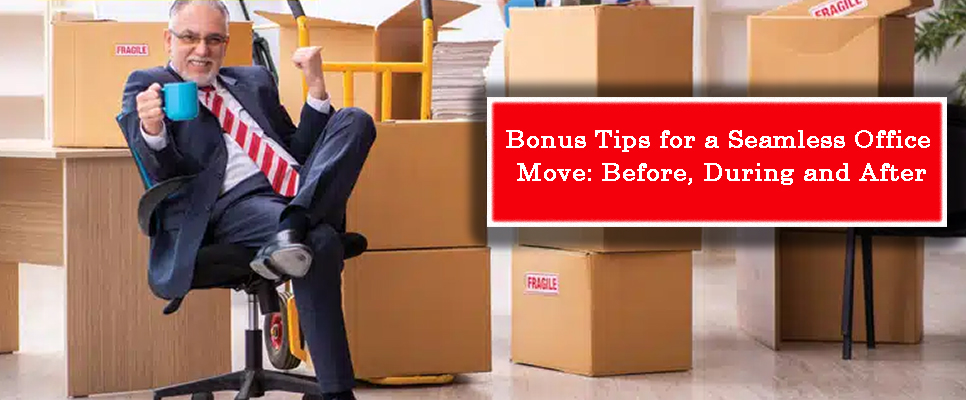A Guide to Commercial Relocation in Perth
Commercial relocation comes with a lot of responsibilities. The reasons for relocating your business can vary widely, ranging from the quest for new market opportunities and increased operational efficiency to the desire for a more favourable business environment. The office relocation includes packing, loading, transporting and unloading all items. The list of items can be longer for some offices. This is why most businesses choose a removalist to organise their business moves.
In this guide, read a comprehensive overview of key considerations for commercial relocation Perth. From analysing your needs and planning the move to executing it efficiently, this blog can help you a lot.

Establish Your Business Needs for Future Growth
It’s critical to assess your company’s future needs before getting too caught up in the details of a transfer. Think about the following:
- Analyse future staff demands and company needs.
- Make plans to buy new equipment and look at leasing possibilities.
- Engage department leaders in the process of finding new locations.
- Identify the local, state, and federal laws that might enforce relocation issues.
- Evaluate customer access, advertising visibility, transportation routes, and resource distance.
Planning Your Business Move: Important Factors
- A well-planned relocation is a critical factor when considering a successful move.
- Estimate the moving cost in light of possible shocks.
- Along with the costs and effects of the colonisation present in that moving officer and accounts, build a moving budget.
- Create a suitable moving schedule for the process.
- The first step is to decide whether a move is necessary or not for the performance of the company.
- Get reliable office movers on board for the move to be stress-free.
The Moving Plan: The Most Important Steps for a Smooth Transition
Initiating a properly documented relocation plan is a fundamental element of the effort.
- Assign a special “moving officer” to supervise the move.
- Include department heads in the process of planning.
- Keep staff members informed and involved during the transition.
- Give responsible staff members assignments.
- With staff input, create a floor layout for the best possible workstation.
- Arrange a spectacular opening event for both staff and clients.
- Involve the media and local dignitaries to increase visibility.
Classic Business Decisions in Your Moving Plan
Consider these additional decisions when planning your move:
- Evaluate the viability of staggering the move by the department.
- Ensure clear labelling of all equipment and furniture.
- Plan for transport and placement with professional removalists.
- Explore short-term storage options if needed.
- Address IT needs, cabling, and power requirements pre-move.
- Ensure the availability of appropriate packing materials.

Office Move Checklist
Planning the Move – 1 to 3 Months Before
Careful planning is a must for a successful relocation.
- Develop an early transition plan and help guide through the process.
- Do research and eventually pick a reliable office removal service, preferably.
- Notify stakeholders on upcoming changes. Listen to the given audio and summarise the key ideas in your own words.
- Design a plan about how the company’s IT infrastructure will move forward.
- Check out the new office layout from the floorplan.
Organising the Move – Notifying Important Entities
- Give a notice to the management that you are moving.
- Pick on the moving company of your choice.
- Let the personnel and the stakeholders know of the move.
- Let your suppliers, customers, and clients know about the new address by informing them.
- Make everyone aware of their responsibilities on the move.
Focus on Logistics and Detailed Planning as for the Move
- Find measurements and plans for the upcoming office space.
- Settle the question of whether to rearrange the present furniture or buy a new one.
- Categorise and label your belongings for easy packing.
- Ensure communal spaces are clear for the move day.
- Arrange for cleaning at both old and new premises.
The Last Chapter – Moving Day
With meticulous planning, moving day should be simple:
- Let movers and workers have time to rest.
- Think about climate control for a relaxing move-in day.
- Organise the transition of crucial IT technology.
- Label the rest of your bags with a clear indication.
- Systematically go through the communal areas.
- Inform the moving company about any damage or breakage you may encounter during the move.
- Give service request types and handover keys, along with company data.
Post-Relocation Steps:
- Power off all the gadgets before loading them in the truck and do not forget to unplug all the cables when the assembly is done.
- Make sure move managers are assigned at the old and the new locations respectively.
- To prevent confusion, carry out one task at a time.
- Make sure everyone knows the new details of the office.
Bonus Tips for a Seamless Office Move: Before, During and After
Before Relocating Your Office
- Start planning early: Planning weeks or even months ahead is the key to success.
- Choose an experienced moving company: Let it be their focus to perform accommodations that facilitate an office move and result in a smooth transition.
- Inform stakeholders: Provide your customers, vendors, and utilities with notification of your relocation.
- Plan for IT relocation: Securely move your servers and PCs to the lowest amount of downtime possible.

During the Office Move
- Have move managers: Coordinate the move at both ends including the instructions for search as well.
- Move one area at a time: Avoid jamming up the area and creating confusion by having a clear division of each section at one time.
After Relocating Your Business
- Plug in after unloading: Make sure everything is handy just place it before connecting the equipment.
- Clear instructions for staff: Give detailed plan on move-in and give settling-in.
Final Words:
Considering all the facts mentioned above it can be easy for anyone to plan an office move. Focus on your moving needs and hire a suitable team of movers and packers who can manage maximum things for you.










